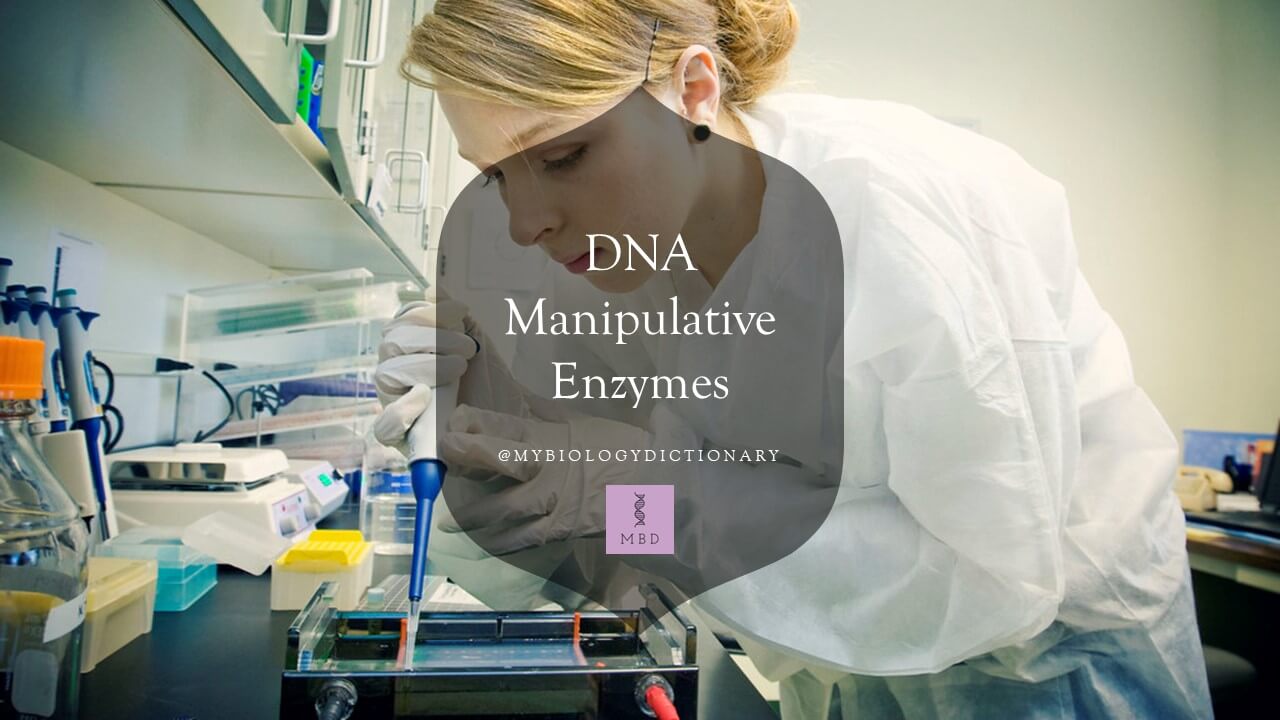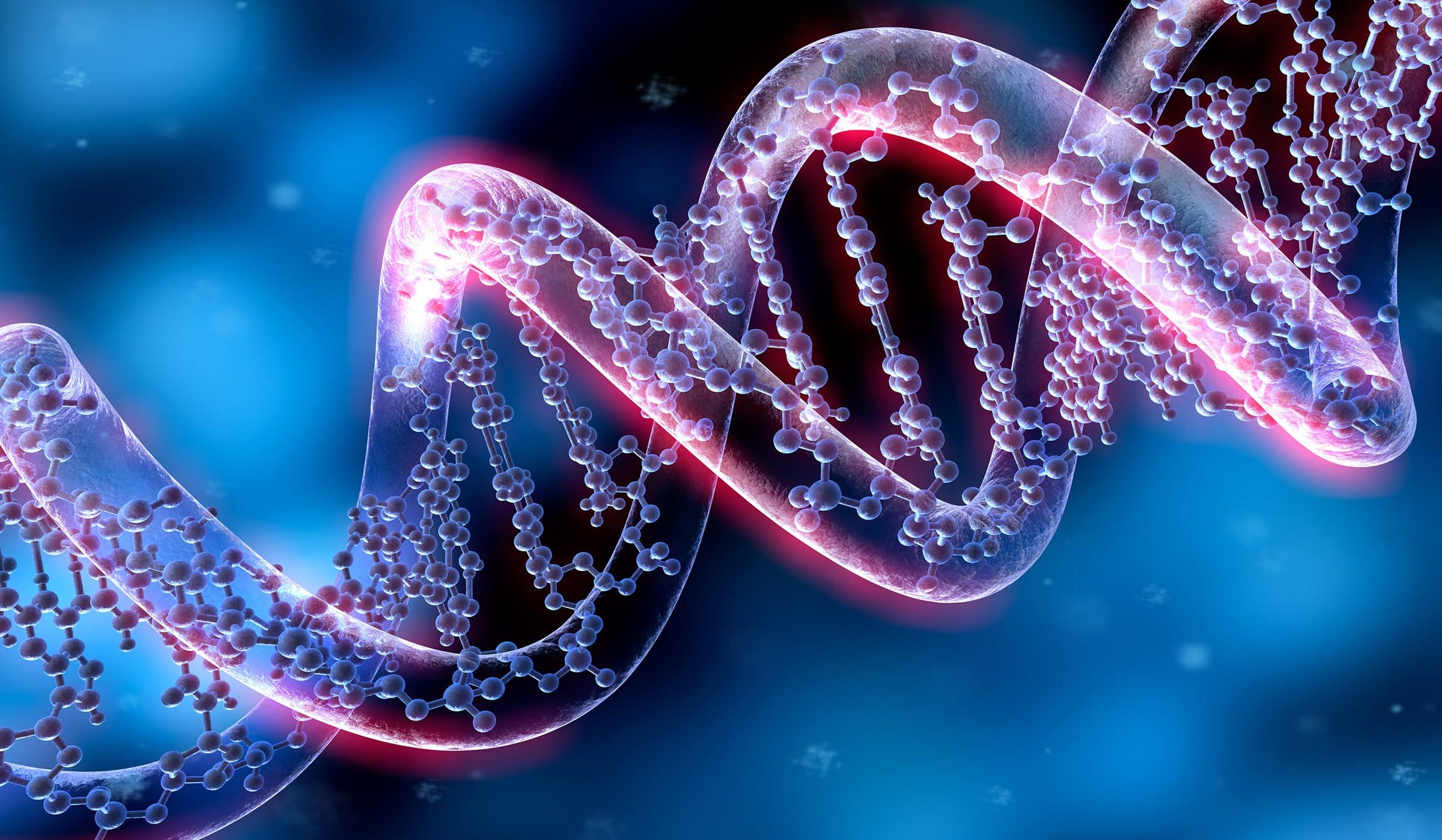DNA Manipulative Enzymes

DNA manipulative enzymes are enzymes that already change integrated bases or add minor bases to DNA or RNA and serve to change the arrangement so that strands won’t be harmed by restriction enzymes. The large group of enzymes known as DNA modifying enzymes includes all additional enzymes utilized in genetic engineering. These enzymes are involved in the manufacturing, modification, and breakdown of nucleic acids. All other enzymes involved in genetic engineering fall under the large group of enzymes known as DNA modifying enzymes. These enzymes are also involved in the manufacturing, modification, degradation, synthesis, and alteration of nucleic acids. The cutting and joining manipulations that determine the gene cloning are carried out by enzymes called restriction endonucleases (for cutting) and ligases (for joining).
Checkout-Microinjection: Method of gene transfer (mybiologydictionary.com)
The basis of recombinant DNA technology is the capability to manipulate DNA molecules in the test tube. All most all the DNA manipulative techniques make use of purified enzymes. Within the cell, these enzymes engaged in essential processes such as DNA replication and DNA transcription. Mainly, enzymes are divided into three main parts i.e.
- Restriction enzymes
- DNA manipulative enzymes
- DNA ligase
Table of Contents
TYPES OF DNA MANIPULATIVE ENZYMES:
Depending on the type of reaction that they catalyze, DNA manipulative enzymes can be grouped into four broad classes:
- NUCLEASES: It is an enzyme that shortens, degrades, or snips the molecules of nucleic acid
- LIGASES: It binds the molecules of nucleic acid together
- POLYMERASE: It generates the replica of molecules
- MODIFYING ENZYMES: It excludes or eliminates chemical groups
Since considering in detail each of these classes of an enzyme, two points should be made. The first point is that, although most enzymes can be designed for a particular class, a few exhibit multiple activities that span two or more classes. Most importantly, many polymerases combine their ability to make different DNA molecules with an identical DNA degradative (i.e., nuclease) activity.
The second point is that it should be appreciated that, as well as the DNA manipulative enzymes, many identical enzymes able to act on RNA are known. The ribonuclease used to eliminate contaminating RNA from DNA preparations are an example of such an enzyme. There are some manipulative RNA enzymes that have applications in gene cloning. We will in general, restrain our thoughts to those enzymes that act on DNA.
Check out-All You Need To Know About Nanobiotechnology (mybiologydictionary.com)
NUCLEASES:
Nucleases reduce, cut or shorten DNA molecules by breaking the phosphodiester bonds that link one nucleotide to the next in a DNA strand. Two different kinds of nuclease are-
- Exonucleases
- Endonucleases
Exonucleases:
Exonucleases are enzymes that cut or degrade the polynucleotide sequence either from the 5′ end or the 3′ end, one at a time. It lies in the number of strands that are cut when a double-stranded molecule is attacked. There is an enzyme called Bal31 (purified from the bacterium Alteromonas espejiana) example of an exonuclease that cuts out nucleotides from both strands of a double-stranded molecule. The larger the length of time that Bal31 is recognized to act on a group of DNA molecules, the smaller the resulting DNA fragments will be. In contrast, there is an enzyme called E. coli exonuclease III just cut one strand of a double-stranded molecule, leaving single-stranded DNA as the product.
Endonucleases:
Endonucleases are enzymes that cut the phosphodiester bond within a polynucleotide chain. S1 endonuclease (from the fungus Aspergillus oryzae) only cuts or degrade single strands (Figure 4.3a), whereas deoxyribonuclease I (DNase I), which is processed from cow pancreas, cuts both single-stranded molecules and double-stranded molecules (Figure 4.3b). DNase I am non-specific or wide-ranging in that it attacks DNA at any internal phosphodiester bond, so the result of prolonged DNase I action is a mixture of mononucleotides and very shortened oligonucleotides. On the other hand, the special group of enzymes called restriction endonucleases cut double-stranded DNA only at a narrow range of specific recognition sites.
LIGASES:
DNA ligase is an essential class of enzymes required in joining the strands of DNA together by catalyzing the association of the phosphodiester bond. In the cell, the action of DNA ligase is to repair single-stranded breaks (“discontinuities”) that appear in double-stranded DNA molecules during, for example, DNA replication. DNA ligases from most organisms can also together two individual fragments of double-stranded DNA. The importance of DNA ligases to maintain or protect genomic integrity is immense.

DNA Ligase
TYPES OF DNA LIGASES:
There are four different types of DNA ligase-
DNA Ligase I – It ligates or joins the nascent DNA on the lagging strand especially gaps between the Okazaki fragments.
DNA Ligase II – These are not assumed to be true ligases as it does not retain their gene. The eukaryotic DNA ligase II is arising from the gene encoding DNA ligase III. Mainly, it participates in the DNA repair or replacement pathway.
DNA Ligase III – It participates in DNA repair, particularly nucleotide excision replacement. This is one of the ligases found in mitochondrial DNA.
DNA Ligase IV – It ligates double-stranded DNA and does take part in the double-strand break repair pathway, especially, the non-homologous end-joining.
POLYMERASE:
DNA polymerases are enzymes that synthesize a different strand of DNA complementary to an existing DNA or RNA template. Most of the polymerases can function only if the template possesses a double-stranded region that acts as a primer for the initiation of polymerization. Mainly, there are four different types of DNA polymerase-
Polymerase I: This is coded by the polA gene. It is a single polypeptide and helps in recombination and repair. It has both types of things exonuclease activity 5’→3’ and 3’→5’. DNA polymerase Ⅰ removes or cuts the RNA primer from the lagging strand by 5’→3’ exonuclease activity and also fills the gap. It is usually processed from E.coli. This enzyme connects to a short single-stranded region (or nick) in a mainly double-stranded DNA molecule, and then synthesizes a completely new strand, degrading the existing strand as it proceeds.
Polymerase II: This is coded by the polB gene and made up of 7 subunits. Its main role of it is to help in repair and also a backup of DNA polymerase III. It has only one type of 3’→5’ exonuclease activity.
Polymerase III: It is the main enzyme for replication in E.coli. This is coded by the polC gene. The polymerization and preparation rate is maximum in DNA polymerase III. It also has only one type of exonuclease activity 3’→5’ exonuclease.
Polymerase IV: It is coded by the dinB gene. Its main role is to help with DNA repair during SOS response when DNA replication is started at the replication fork.
Polymerase V: It is mainly involved in translation synthesis during SOS response and DNA repair.
DNA MODIFYING ENZYMES:
Many enzymes repair DNA molecules by the addition or removal of specific chemical groups. These are the most important as follows:
Chromatin Structure Affects the Activity of DNA-Modifying Enzymes – https://www.urmc.rochester.edu/labs/hayes/projects/chromatin-structure-affects-the-activity-of-dna-mo.aspx
Alkaline phosphatase: It is from E. coli, calf intestinal tissue, or arctic shrimp. It removes the phosphate group present at the 5′ terminal of a DNA molecule.
Polynucleotide kinase: It is from E. coli infected with T4 phage. It has the reverse effect of alkaline phosphatase, adding phosphate groups onto free 5′ termini
Terminal deoxynucleotidyl transferase: It is from calf thymus tissue. It adds one or more deoxyribonucleotides onto the 3′ terminal of a DNA molecule.
To sum it up, all these enzymes such as endonucleases, ligases, DNA polymerases, and nucleases are used in molecular biotechnology methods, such as genetic engineering, DNA fingerprinting, gene manipulation, gene identification, and many more. Without these enzymes, biotechnology cannot be used as a tool to boost the quality as well as quantity of the products produced by plants or genetically modified plants. All these enzymes are the most important or we can say the heart of biotechnology applications.
Keep reading for more!
Team MBD
Watch more-The DNA Manipulation Enzymes – YouTube





Good
Nice👍
Great article
Great